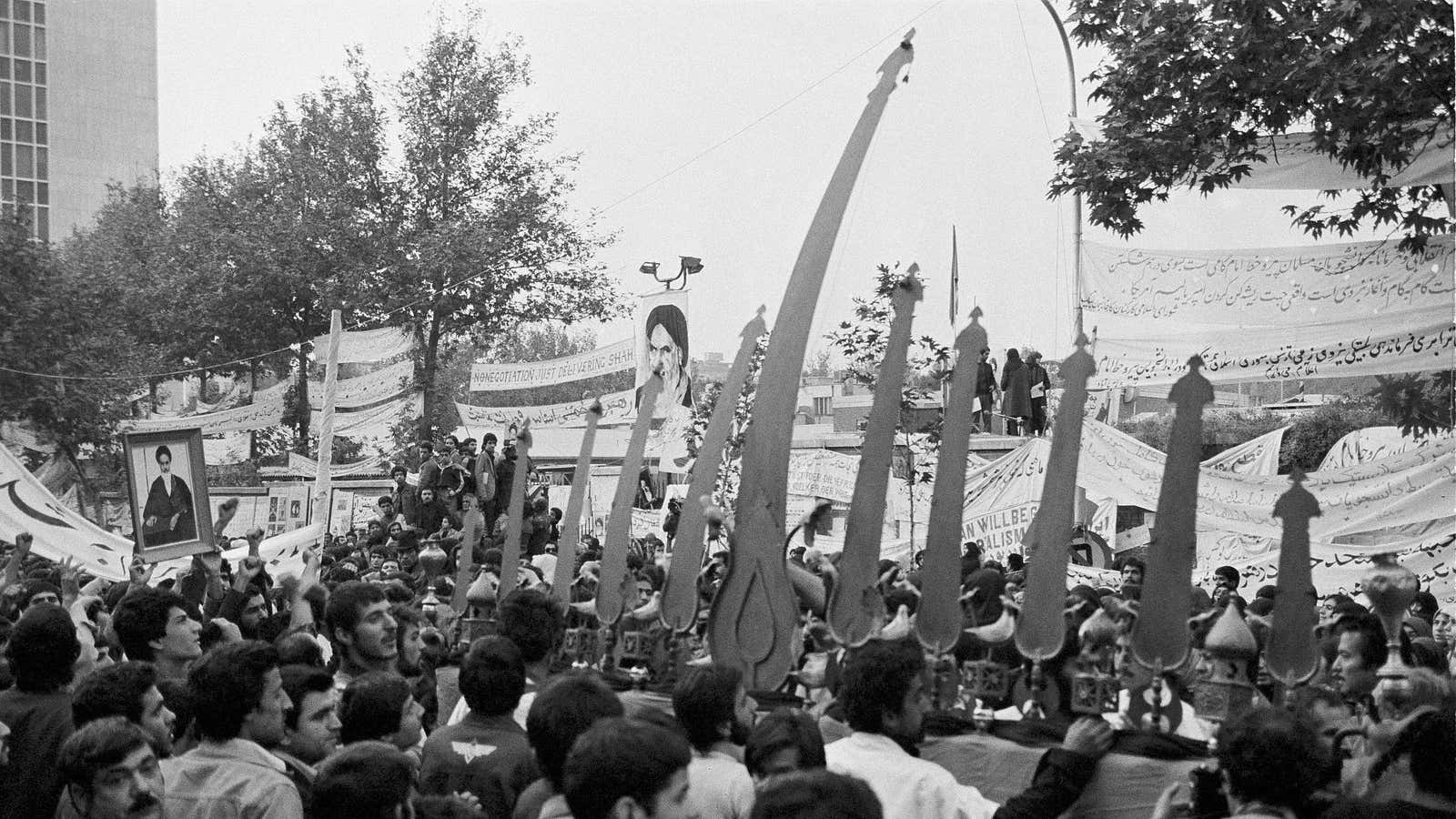Many people think the life of a diplomat is all about cocktail parties and not having to pay parking tickets. It has always been a more complicated, and occasionally dangerous, business however. For instance one might read about a mob, enraged by news from abroad, that had gathered in front of the American diplomatic compound in Benghazi, Libya. The account would describe how their anger quickly boiled over before they attacked the facility and set it on fire. The dense smoke created put the American diplomats trapped inside at grave risk.
That could be a description of the 2012 incident in which US ambassador to Libya J. Christopher Stevens died. It could also be a report from 1967, when another mob in Benghazi decided to burn down the building occupied by American diplomats. They were reacting to false reports about the US role in a war between Israel and its Arab neighbors that had just broken out.
Risks to diplomats are as old as the practice of diplomacy. Take for example the case of two unfortunate envoys that called on a 15th-century prince in what is now Romania. He asked why they did not remove their hats in his presence. They explained it was not their custom to do so. Somewhat displeased by that response, the prince had the ambassadors’ hats nailed to their heads. The prince, known as Vlad the Impaler, or Vlad Dracul, went on to be the inspiration for the Bram Stoker’s Count Dracula.
The reality is that the business of being a diplomat has always been more difficult, and often more dangerous, than many people appreciate. When their lives are at stake it makes the news, but only for a few days until the media moves on. Unless of course politics demands it be kept alive longer. The countless congressional inquiries that continue into the 2012 Benghazi incident are not due to concern over the safety of diplomats, but are simply a cynical effort to diminish the chances for another president with the last name Clinton.
Chris Stevens was the first ambassador to be killed since 1979, so such tragedies are at least infrequent. One might ask what the normal life of an ambassador is like beyond the potential to die in the line of duty. The answer is the locations and conditions vary so much in the 285 American embassies and consulates around the world that it is hard to generalize other than to say an ambassador must worry about the internal management of his or her mission as well as relations with a large number of constituencies outside it.
About 70% of ambassadors are career Foreign Service Officers who worked their way up through the ranks of the State Department. The remaining 30% are political appointees who helped the president get elected in one way or another. Many in the latter group got the title because of large campaign contributions, and they go to rich countries and island nations. Those who buy ambassadorships want to be sent to countries where their friends will visit.
This arrangement has been the case for decades and has been tolerated because relations with rich countries tend to be robust enough to withstand the occasional bad ambassador. But in today’s globalized world is it wise for the United States to be the only serious country that chooses a significant portion of its ambassadors on the basis of the size of their bank accounts? Would the job of captain of a destroyer be auctioned off to the highest bidder with the excuse that it is just a small ship?
Ambassadors are no less important to the national defense than the commanders of warships. And embassies, like ships, need to be run well in order to perform effectively. That does not always happen. One recent ambassador to Luxembourg had a management style that was so endearing that many on her staff were volunteering to go to Kabul or Baghdad in order to shorten the time they had to work for her.
Managing an embassy staff is a challenge because the people that work at embassies come from dozens of different agencies outside the State Department. They will all stand up when the ambassador comes in the room, but they all have a boss in Washington that will determine their next promotion and assignment to a much greater degree than the ambassador. Because of this, getting all the employees of the government to act like they work for the same organization is not easy or automatic.
Given the spread of democracy, social media and instant communication, reaching out to all the constituencies outside the embassy is more important than it has ever been in the past. That requires ambassadors to have a deep understanding of the country they are in as well as the ability to speak the local language. That means not having ambassadors who take to Twitter to publicly humiliate the local government in an attempt to encourage policy changes as Caroline Kennedy has done in Japan. And it means not sending ambassadors who claim to speak “conversational” Spanish to places like Argentina. It matters whether the conversation is at a kindergarten level or a highly educated one.
The cost of the two presidential campaigns in 2008 was over a billion dollars. In 2012 they each cost that much. And the figure will probably double again by the time 2016 comes to an end. The country will be lucky if the selling of ambassadorships does not increase. Meanwhile, the demands of globalization are increasing too, making good ambassadors more important every day.
Dennis Jett was the US ambassador to Mozambique and Peru. He is the author of American Ambassadors: The Past, Present, and Future of America’s Diplomats.
